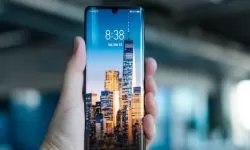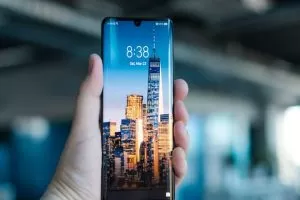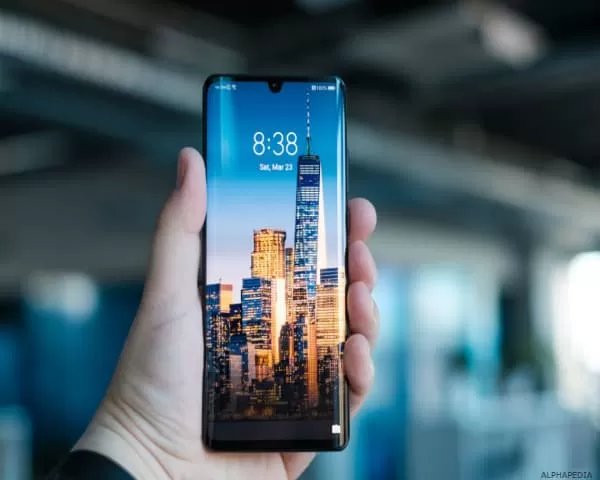Cell Phone History
There are now over two billion mobile phones in the world. And in Europe, the number of mobile phones exceeds the number of people living there (in some countries, 2 to 1!). The first device was introduced by Bell Laboratories in Missouri in 1947.
Since then, similar to any other device that has evolved into modern life, the cell phone has undergone widespread refinements, reducing its size and increasing its power, range and complexity. Today, everything from modern business negotiations to long-distance calls home on Thanksgiving is made accessible with mobile phone technology.
Here is some important information to help you learn more about the history of the mobile phone:
1973
The first mobile phone call was made by Dr. Martin Cooper, an employee of Motorola, in New York using a prototype Dyna TAC phone. Cooper called his friend who worked at rival AT&T. The phone weighed over a kilogram and took 10 hours to charge!
1979
Japan has always been at the forefront of technology and in 1979 they launched the first commercially available automated cellular network, however it was only available in cars. We now call this “1G”.
1981
1G reaches the western coasts, first in Scandinavia and then in the United Kingdom and North America.
1983
The first mobile phone is released in the form of the Motorola DynaTAC 8000X. It costs a few tearful $ 4000 USD.
1985
Michael Harrison made the first mobile phone call in the UK. He called his father, the then president of Vodafone, Sir Ernest Harrison.
1989
The first truly portable mobile phone hits the shelves: the Motorola 9800X with a flip-top cover for the keypad.
1991
The GSM (Global System for Mobile Communications) phone was launched and 2G digital cellular networks replaced the 1G analog system.
2G made text messaging, picture messaging and multimedia messaging (MMS) possible, creating a completely new way for people to communicate.
1992
Neil Papworth sent the first text message to the Orbitel TPU 901 phone from Vodafone director Richard Jarvis. It said “Merry Christmas!”
1994
IBM introduced the Simon that had a touch screen and a very early form of what we all know today as “Applications”. It cost $899 and only worked in 15 states in the United States.
Nokia also launched the 2110 in Europe, it was one of the smallest GSM phones available and a ringtone option that brought us the iconic Grande Valse, now known as the Nokia Ringtone.
1996
The first phone with the “slider” form factor was shaped like the Nokia 8110. It was nicknamed the banana phone because of its shape and even appeared on the big screen in Matrix. It was also the first device to feature a monochrome LCD screen.
Another first came from the Motorola StarTAC as the first folding phone or folding device. Over 60 million units were sold worldwide.
1997
The iconic game Snake is launched on the Nokia 6110 which marks the beginning of mobile gaming. Hagenuk launched the GlobalHandy without an external antenna; Ericcson brought out color keyboard panels and Siemens brought us the first phone with a color screen: the S10.
In the UK, Mercury One2One started the first pay-per-use service called “Up 2 You”. It allowed customers to recharge their call credit and then became T-Mobile and then USA.
1998
Nokia launched the 5110, which was very popular in the consumer market and incorporated replaceable faceplates (which Nokia called ‘Xpress-on covers’), making it the first truly customizable phone.
1999
WAP is launched on the Nokia 7110, making it the first phone to be able to browse the web, although it’s a reduced version that doesn’t provide the full HTML experience we know today.
2000
The Sharp J-SH04 becomes the first camera phone on the market, but is only available in Japan. BlackBerry launched its 857, which supports email and web browsing, signaling the beginning of BlackBerry’s reign as the king of business.
Nokia also launched perhaps the most iconic phone of all time – the Nokia 3310. It sold 126 million units.
2001
The full color screens start coming to the market first with the Mitsubishi Trium Eclipse, but the Ericcson T68i. Qwerty keyboards also appeared in the form of the Nokia 5510, but it was the 8310 that proved to be the popular phone due to its sleek design and cutting-edge features including infrared, a fully functional calendar and an FM radio.
2002
Europe’s first camera phone, the Nokia 7650, was launched. T-Mobile also announced the first UK imaging messaging service available on the Sony Ericsson T68i. The 7560’s 0.3 megapixel sensor gave it 640 × 480 pixels of colour images.
2003
The Finnish giant’s all-time best-selling phone, the Nokia 1100, hit the stores and has since sold over 200 million units.
3G networks are beginning to be deployed around the world, providing data transmission speeds three to ten times faster than 2G. This enabled users to watch video clips, participate in video conferences and use location-based services for the first time.
2004
Motorola launches the Razr V3, one of the most popular “fashion-oriented” phones between 2004 and 2006. Over 130 million units were sold and it is the best-selling shell device of all time and possibly sets the standard for future stylish designs to come.
2005
Android, the mobile operating system was acquired by Google, which sent the message that the Mountain View giant was serious about mobile technology.
The Casio G’zOne became the first waterproof phone to trigger a move towards IP-certified phones.
2006
The Nokia N95 was launched offering the first real smartphone experience. It was powered by Symbian, had 160 MB of RAM, the world’s first 5 megapixel phone camera, Bluetooth and Wi-FI. 2007
In June 2007, the first generation iPhone was launched. Introduced by Steve Jobs, it featured an automatic rotation sensor, a capacitive display that allowed multiple entries while ignoring minor touches. Needless to say, it was an instant success.
2008
The first Android phone called G1 is released. It has a limited touch screen and a slide-out keyboard. Elsewhere, Microsoft decides to eliminate Windows Mobile citing that it cannot compete with iOS or Android.
It starts running on a new operating system: Windows Phone. Apple also launches the app store with 552 apps available for download.
2009
Launch of WhatsApp, its co-founder, Jan Koum, came up with the idea for the messaging application during a movie night at a friend’s place.
In Sweden and Norway, TeliaSonera becomes the first operator to offer customers 4G services. In practical terms, 4G has data transfer speeds five times faster than 3G networks.
2010
Apple released iPhone 4 but antenna problems plagued it. Google finally launched a branded smartphone: the Nexus One.
2011
Samsung consolidates its place as the world’s largest smartphone provider with the Galaxy S II which includes an 8MP camera and AMOLED display.
2012
Five years after the first iPhone hit the stores, the fifth-generation model lands in September. The iPhone 5 sells 5 million units in its first weekend.
2013
Fingerprint scanning became widespread when it was launched on the iPhone 5S via the touch button.
2014
3G coverage is now available to 99% of the UK population. Elsewhere, Facebook is acquiring WhatsApp for $19 billion.
2015
Chinese firms Huawei and Xiaomi are making headway in Western markets, but both Samsung and Apple continue to dominate with the Galaxy S5 and iPhone 6S, respectively, with 38% of the global market share between them.
4G data traffic surpassed 3G for the first time. Although 4G represents only 14% of mobile connections in 2015, it already accounts for 47% of mobile data traffic.
2016
Google abandons its Nexus brand and replaces it with Pixel, launching two new high-end smartphones; Pixel and Pixel XL. Both expect to compete directly with Apple’s iPhone 7 and 7 Plus.
2017
Microsoft ends support for the Windows Phone operating system, only 7 years after its response to Android and iOS. The dominance of display design continues to increase, with the Samsung Galaxy S8 and iPhone X taking over 82% of the screen-to-body ratio.
The focus on display real estate sees the ‘notch’ trend increasing. The Sharp Aquos S2 and the Essential Phone were the first to showcase the feature before the iPhone X gave it a real profile.
SMS messaging is celebrating its 25th anniversary. After struggling to gain widespread adoption due to poor coverage, the service now delivers 22 billion messages a day.
2018
The Chinese manufacturer Ulefone launches the Power 5 which incorporates a 13,000 mAh battery, the largest ever seen in a mobile phone four times larger than Apple’s flagship, the iPhone XS Max launched in the same year.
2019
The UK and US are beginning to implement the 5G network, initial indications are that real-world data transfer speeds are 10 times faster than 4G.
Related Topics

ADVANTAGE OF USE SMARTPHONE

OLD CELL PHONES

BUY A CELL PHONE

💚 WHO INVENTED THE MOBILE PHONE ?

HOW MOBILE TELEPHONY WORKS ?

DISADVANTAGE OF USE SMARTPHONE
Other Stories
Other Topics of Interest in ALPHAPEDIA

FREE BACHELOR DEGREE IN PHYSICAL EDUCATION

DEUTERONOMY

FREE MASTER’S DEGREE IN CRIMINALISTICS

FREE BACH FLOWERS COURSE

FREE BACHELOR DEGREE IN CYBERSECURITY

FREE URBAN PLANNING COURSE
Cellular or Mobile Phone Image




